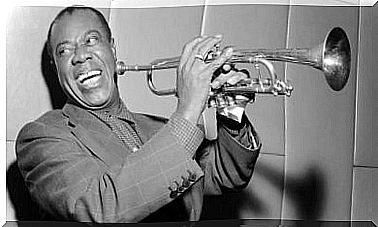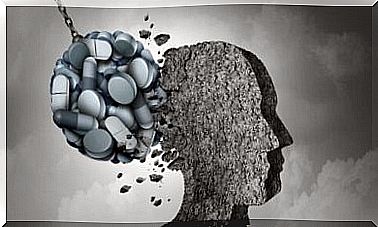How Do Opiate Pain Relievers Work?

The search for different ways to treat pain has been constant throughout history. Opioid analgesics were already used in a natural way for a long time, obtained from the opium plant.
In 1806, morphine was isolated for the first time as the main element in opium. From there, the development of this group of drugs began.
What are opiate pain relievers? They are drugs with great analgesic potency that owe their pharmacological action to the union with opioid receptors of the central nervous system. There are natural opiates derived from opium, such as morphine, and other synthetic ones, such as fentanyl.
They are characterized by having an unroofed analgesic potency. That is, the more doses, the greater the analgesic effect. However, this is also accompanied by many unwanted effects, as we will see later.
They are used mainly in the treatment of severe and acute pain, as well as in terminal patients, especially those affected by cancer.
Before starting treatment with opioid analgesics, a proper evaluation should be performed. They should be used to treat severe pain for which other types of drugs are not helpful.

How do opiate analgesics work to treat pain?
Opioid analgesics, as we said, bind to opioid receptors in the central nervous system.
Although there are mainly 4 types of receptors, only 3 of them act on pain: μ, κ and δ (mu, kappa and delta). Depending on the affinity with the receptor and the action they exert on it, opiate drugs have different effects.
According to their affinity with the receptors and their clinical utility, we classify them as follows:
- Pure agonists on µ receptors: eg morphine, fentanyl, methadone and oxycodone. They have analgesic action and also a powerful euphoric action.
- Agonists at κ receptors and partial agonists or antagonists at μ receptors: such as nalbuphine or butorphanol. If given with a pure agonist, they can antagonize its effect and suppress its effectiveness.
- Partial agonists: buprenorphine. They have an analgesic effect when administered alone.
- Pure agonists: naloxone, naltrexone. They have the ability to antagonize or reverse the effects of other opiates.
Other uses and side effects
In addition to being useful in pain relief treatment, opiate medications are also used in other areas, such as anesthesia. In such cases, they are usually used in combination with an anesthetic medication and a neuromuscular blocker.
They can also be used to sedate a patient or to suppress their autonomous breathing in cases where mechanical ventilation is required.
As for the main problem presented by the use of these opioid analgesics, we can mention the risk of dependence. Therefore, they are usually used only in short treatments of acute pain or in terminal patients.
The most common side effects of treatment with these medications are:
- Constipation: These medications reduce gastrointestinal motility and gastric, biliary, and pancreatic secretions.
- Nausea.
- Somnolence.
- Confusion.
Other side effects that may also appear are, for example:
- Headache.
- Dizziness.
- Sweating.
- Mood changes.
- Difficulty in urinating.
- Dry mouth.
- Muscle rigidity.
- Respiratory depression.

It has also been observed that the chronic use of opioid analgesics has a depressant effect on the immune system. Thus, their ability to produce antibodies is reduced and the possibility of developing infections increases. Other possible cardiovascular effects are bradycardia and hypotension.
When long-term treatment with opioid analgesics is established, tolerance usually emerges. That is: more and more doses are needed to achieve the same therapeutic effect. We can say that the body “gets used to” the drug.
Likewise, they can generate physical dependence, resulting in a withdrawal syndrome when interrupting treatment or significantly reducing the dose. This can be avoided if the reduction is gradual, following the specialist’s instructions.
Another type of addiction would be the psychological type, also called addiction. In this case, the patient seeks the psychic effects of this type of drug, above the objective of analgesia and pain treatment.









